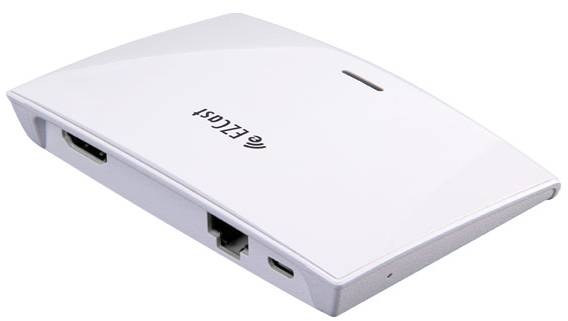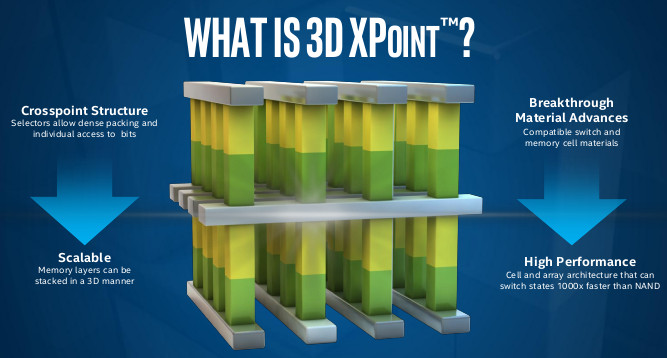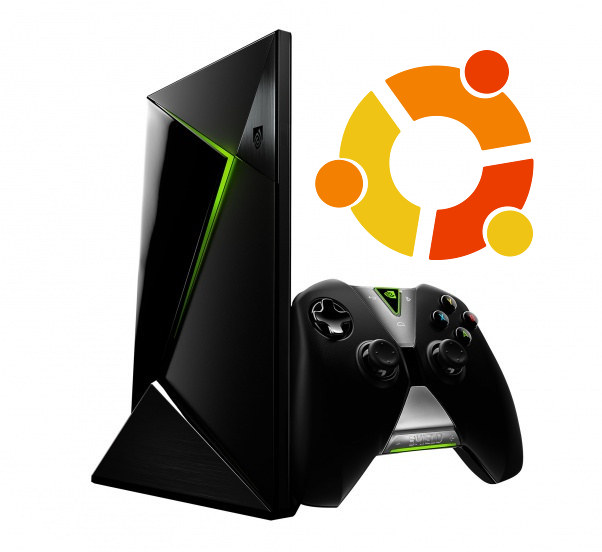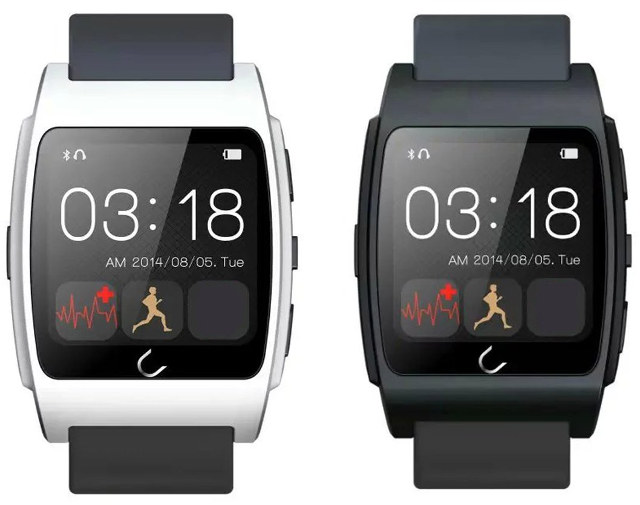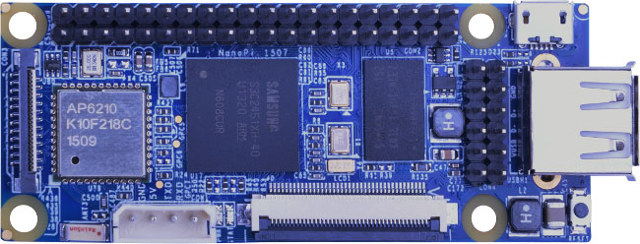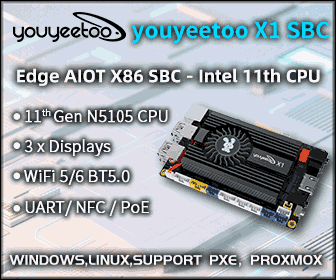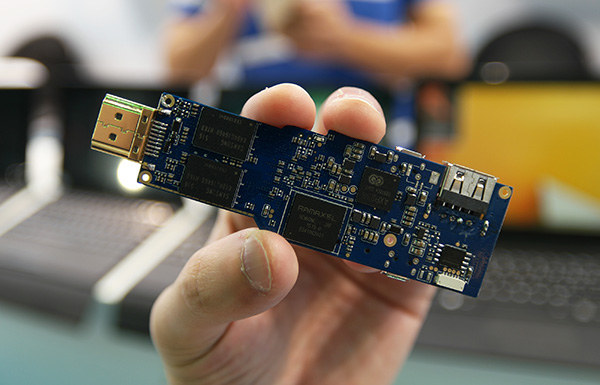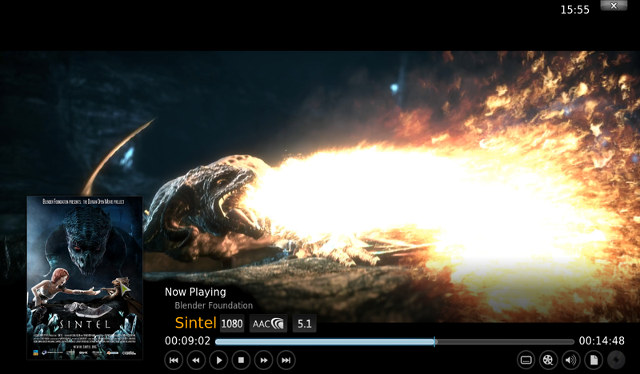EZCast is a technology that allows screen mirroring and expansion over WiFi or Ethernet, and based on Action Micro SoCs. The products also usually include Miracast, AirPlay, and DLNA support, and work with Android and iOS devices, as well as Windows and Mac OS computers. The company behind the products has now launched a giveaway campaign where it plans to giveaway 100 EZCast LAN (aka Tronsmart T3000) and 100 EZCast music devices until August 20th. You’ll need a Facebook or Google+ account to participate: Facebook entry: Like EZCast page Share the giveaway announcement from EZCast page on your Facebook timeline (publicly) Google+ entry: Join EZCast Google+ Community Share the giveaway announced from the EZCast Google+ community (currently pinned at the top of the community) Winners will be selected randomly each day, with their name posted on G+ or Facebook. Good luck. Thanks to VMG for the tip.
Intel and Micron Promise 1000x Faster Storage with 3D XPoint Memory
Non-volatile memory is usually the bottleneck in electronics systems and computers, as it takes much longer to move data from storage than in RAM or cache, so any improvement may yield great benefits, especially when your application requires lots of I/Os. Micron and Intel claim to have developed a new category of memory, and announced 3D XPoint (Read “3D cross-point”) memory as the first break through since the launch of NAND Flash in 1989. There’s great variability between different NAND flash chips, but the companies announced that 3D XPoint is 1,000 times faster and endurant (write cycles) than NAND flash, and 10 times denser than conventional DRAM. The technology would mainly benefit most applications, but especially more demanding ones such as high resolution gaming (4K/8K), real-time pattern recognition, and genomics. Based on the presentation video below, it even seems 3D XPoint memory can be used to replace RAM and NAND […]
Nvidia SHIELD TV Benchmarks in Ubuntu Shows Core i3 Like Performance
Nvidia SHIELD Android TV was announced this March with Nvidia Tegra X1 octa-core Cortex A57 + A53 processor. So far, I had not seen any Ubuntu or other Linux distribution port, but Michael Mirabel of Phoronix got remote access to a Shield TV PRO – model with a 500GB hard drive – running Ubuntu 14.10. It’s not clear who provided access, either Nvidia or third parties, but somebody posted an Ubuntu 14.10 port on XDA Developers Forums recently so it might be that one. He obviously ran Phoronix Test Suite on the device, and compared to it some other ARM devices (Compule Utilite, Jetson TK1), MIPS Creator CI20, low power x86 devices (Compute Stick, Intel NUC with Celeron N2820), and an Intel Core i3-5010u NUC. The Tegra X1 platform easily beats all other low power platforms, and comes close to the Core i3 mini PC in most tests. In the […]
$55 UWatch UX Strapless Heart Rate Monitor Watch Syncs with iOS and Android Devices
Last time I checked about heart rate monitor, they required a chest strap to monitor ones heart rate, which I found cumbersome. It’s been while though, and I’ve now been informed that a low cost Bluetooth strapless heart rate monitor watch was available for $59.99 on GeekBuying. This type of product should provide a much more accurate evaluation of your daily calories burn rate than typical fitness bands based on an accelerometer and gyro sensor, but I’m not quite sure how they compare to the old models with a chest strap. Uwatch UX specifications and features: SoC – Mediatek Aster MT2501 ARM7 processor @ 108 MHz (A lower end version of MT2502 used in LinkIt One Devkit) System Memory – 32MB RAM Storage – 24MB NOR flash Heart rate monitor – Built-in photoelectric heart rate sensor Other sensors – magnetometer, 3-axis gravity and acceleration sensor Connectivity – Bluetooth 4.0 and […]
New FCC Rules May Prevent Installing OpenWRT on WiFi Routers
Many cheap WiFi routers are sold with the vendor firmware, but the most popular ones likely also support OpenWRT, which some users may prefer as it is much more customizable. However, this may soon become more difficult according to a talk at the upcoming “Wireless Battle of the Mesh” which will take place on August 3-8 in Maribor, Slovenia. The talk scheduled for August 6 at 15:00 is entitled “openWRT vs. FCC – forced firmware lockdown?” and Simon Wunderlich, the speaker, provided the following abstract: The new FCC rules are in effect in the United States from June 2nd 2015 for WiFi devices such as Access Points. They require to have the firmware locked down so End-Users can’t operate with non-compliant parameters (channels/frequencies, transmit power, DFS, …). In response, WiFi access point vendors start to lock down firmwares to prevent custom firmwares (such as OpenWRT) to be installed, using code […]
NanoPi is a $16 WiFi and Bluetooth LE Linux Development Board
NanoPi is a new Linux development board powered by Samsung S3C2451 ARM9 processor with Wi-Fi and Bluetooth LE connectivity, connectors for a camera and an LCD display, as well as two expansion headers including a 40-pin “Raspberry Pi compatible” header. NanoPi specifications: Processor – Samsung S3C2451 ARM9 @ 400Mhz System Memory – 64M DDR2 Storage – micro SD slot Connectivity – AP6210 module for 802.11 b/g/n WiFi and Bluetooth 4.0 USB – 1x USB 1.1 host port, 1x micro USB OTG port for power and data (serial or Ethernet) Display I/F – LCD Interface: 0.5mm pitch SMT FPC seat, support full-color LCD (RGB: 8-8-8) Camera I/F – DVP Camera Interface: 0.5mm pitch FPC connector, including ITU-R BT 601/656 8-bit, I2C and GPIOs Debugging – Serial Port Expansion Headers “GPIO1” – 40-pin header including UART, SPI, I2C, GPIO pins (Raspberry Pi compatible) “GPIO2” – 12-pin header including I2S, I2C, UART pins Power – […]
PiPo X1 is a Windows 10 Bay Trail HDMI TV Stick
PiPo used to the mostly know for its low cost tablets, but then they started launching ARM based mini PCs, and followed with x86 mini PCs such as the popular PiPo X7. Netbook Italia found out the company is now working on a new HDMI TV stick that will run Windows 10, but they must have run out of “lucky” names because the product will apparently be called PiPo X1, a name they already used for a Rockchip RK3188 TV stick… The hardware is not really interesting, as it has basically the same specs as the other Bay Trail-T sticks on the market: SoC – Intel Atom Z3735F “Bay Trail” quad core processor @ 1.33 GHz (Bust frequency: 1.83 GHz) with Intel HD graphics Gen 7 System Memory – 2 GB Storage – 32 GB eMMC + micro SD slot up Video & Audio Output – HDMI Connectivity – 802.11 […]
Kodi 15 Isengard Release
After several months of development, including H.265 hardware decoding in Android, Kodi 15 “Isengard” has recently been released by the developers. It’s available for Windows, Linux, Mac OS X, and Android, and for the first time a stable release can directly be downloaded from Google Play store with so far over 400,000 active installs from the app store. Key features and improvements of Kodi 15 include: Android specific changes – 4K, refresh rate switching and H.265 for hardware that support it including several Amlogic platforms, and Nvidia Shield Android TV. Android 5.0 and greater is required. New chapter selector window – Allows users to visually browse and select chapters from mkv videos and other containers that support chapters Adaptive seeking (aka Skip Steps) – The more times a user presses a button to seek in a period of time, the larger the jump forward or backward will be. Audio and […]


